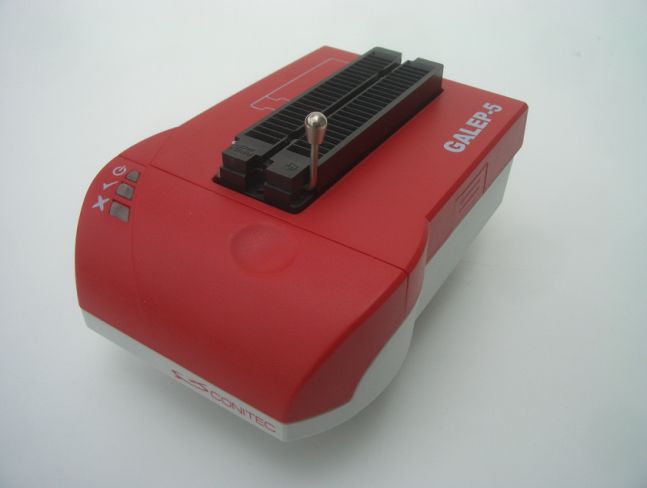
Pocket Programmer Galep-5 with a ZIF socket
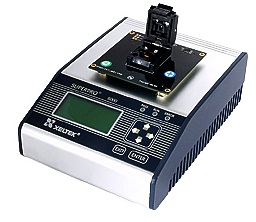
SuperPro6100: USB interfaced stand alone Universal Programmer
with plug-in Adapter Board
A programmer (hardware), device programmer, chip programmer, device burner, or PROM writer is a piece of electronic equipment that arrange written software to configure programmable non-volatile integrated circuits, called programmable devices. The target devices include; PROM, EPROM, EEPROM, Flash memory, eMMC, MRAM, FeRAM, NVRAM, PLD, PLA, PAL, GAL, CPLD, FPGA, and MCU. These are terminologies in the field of computer hardware.
Function
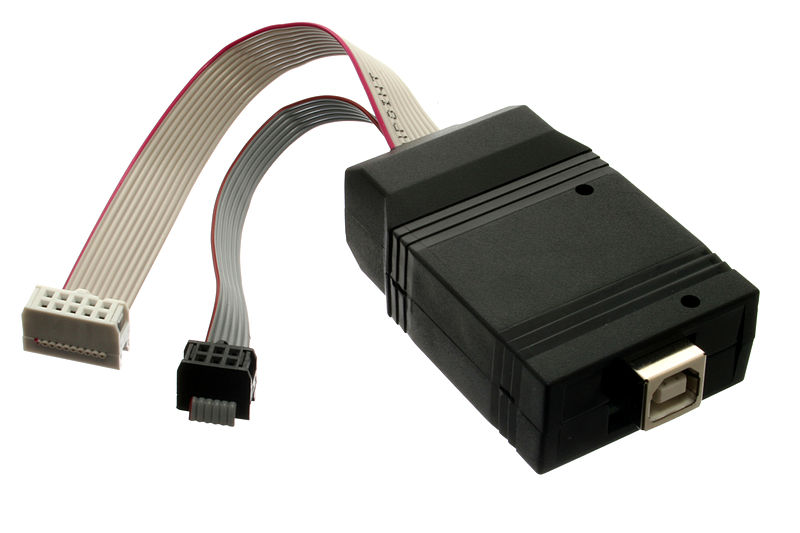
JTAG Connector-based On-Board Programmer for AVR microcontroller with USB Port interface
Programmer hardware has two variants. One is configuring the target device itself with a socket on the programmer. Another is configuring the device on a printed circuit board.
In the former case, the target device is inserted into a socket (usually ZIF) on top of the programmer. If the device is not a standard DIP packaging, a plug-in adapter board, which converts the footprint with another socket, is used.
In the latter case, device programmer is directly connected to the printed circuit board by a connector, usually with a cable. This way is called on-board programming, in-circuit programming, or in-system programming.
Afterwards the data is transferred from the programmer into the device by applying signals through the connecting pins. Some devices have a serial interface, for receiving the programming data (including JTAG interface). Other devices require the data on parallel pins, followed by a programming pulse with a higher voltage for programming the data into the device.
Usually device programmers are connected to a personal computer through a parallel port, USB port, or LAN interface. A software program on the computer then transfers the data to the programmer, selects the device and interface type, and starts the programming process to read/ write/ erase/ blank the data inside the device.
Types
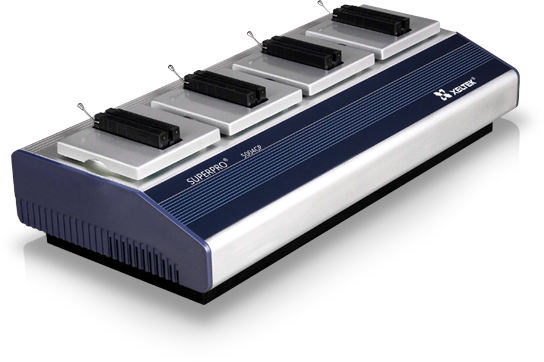
A Gang Programmer with a Set of 4 Sockets.
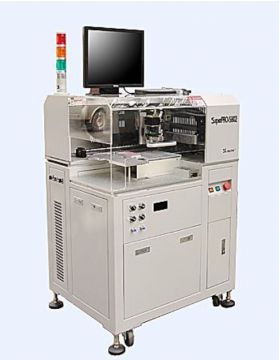
Xertek SuperBot-2
16-Sockets Automated Gang Programmer
There are four general types of device programmers:
1) Gang programmers (multi-programming sites, having a set of sockets) for mass production.
2) Development programmers (usually single-programming site) for development and small-series production.
3) Pocket programmers for development and field service.
4) Specialized programmers for certain circuit types only, such as FPGA, microcontroller and EEPROM programmers.
History
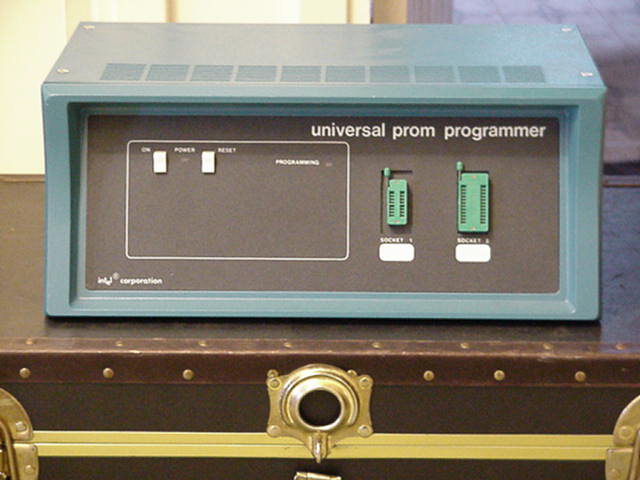
Historical Programmer;
A shoebox size
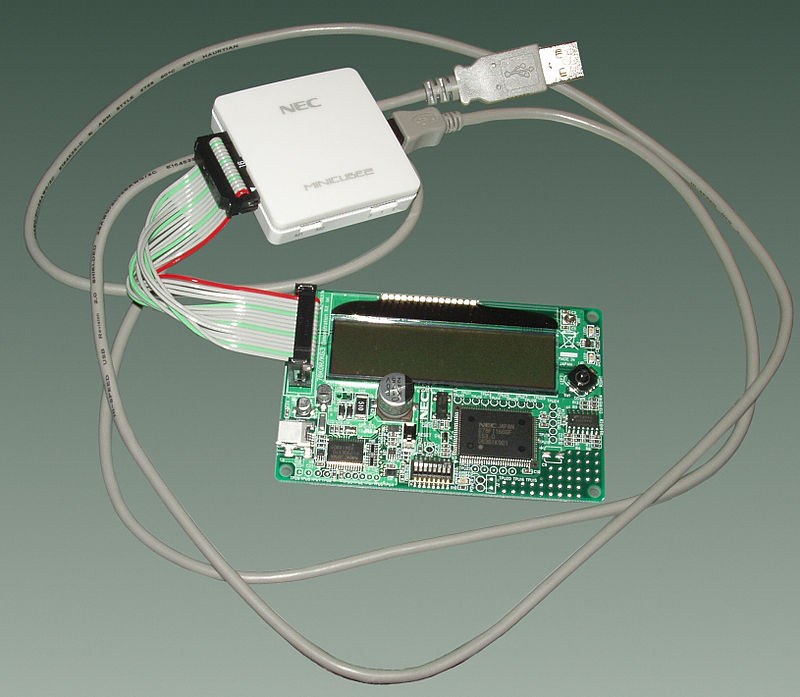
Pocket-sized & USB Port interfaced "ICE for MCU" &
Flash memory Programmer
Regarding old PROM programmers, as the many programmable devices have different voltage requirements, every pin driver must be able to apply different voltages in a range of 0–25 Volts. But according to the progress of memory device technology, recent flash memory programmers do not need high voltages.
In the early days of computing, booting mechanism was a mechanical devices usually consisted of switches and LEDs. It means the programmer was not an equipment but a human, who entered machine codes one by one, by setting the switches in a series of "on" and "off" positions. These positions of switches corresponded to the machine codes, similar to today's assembly language. Nowadays, EEPROMs are used for bootstrapping mechanism as BIOS, and no need to operate mechanical switches for programming.
Source: wikipedia.org
